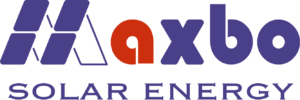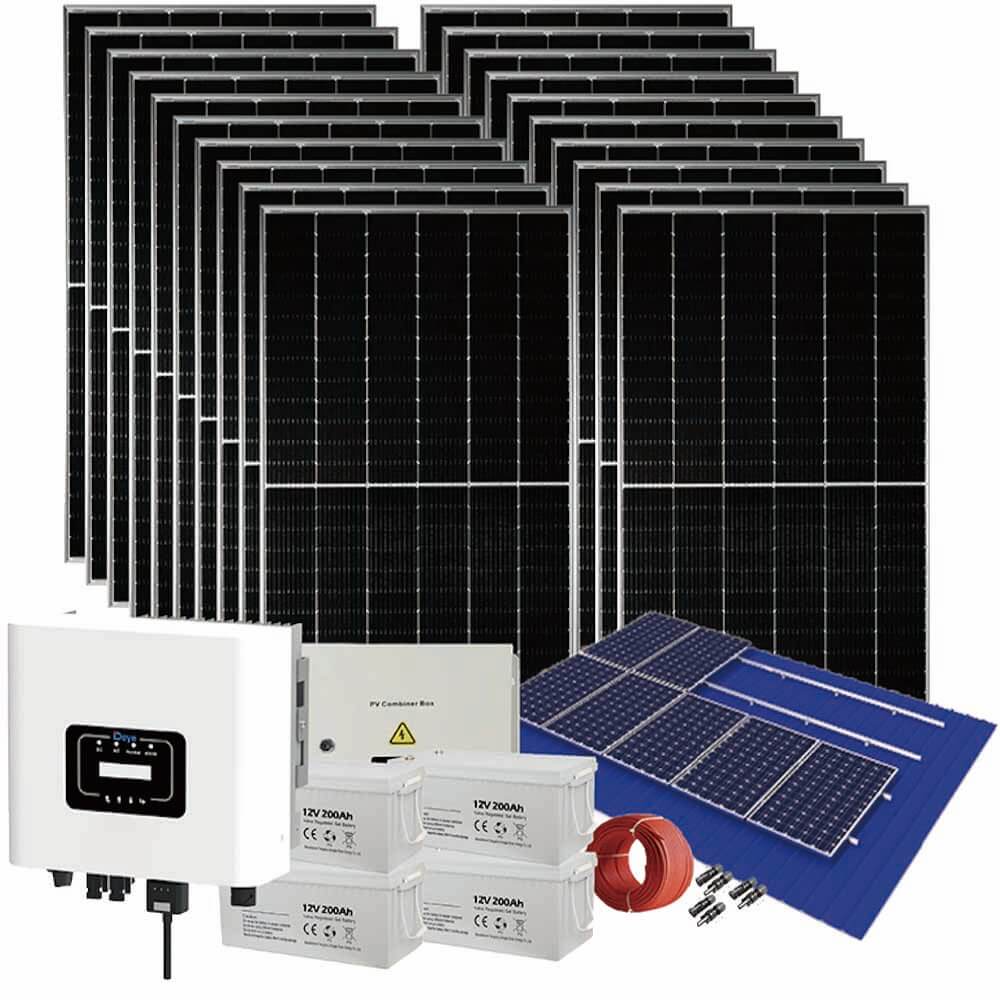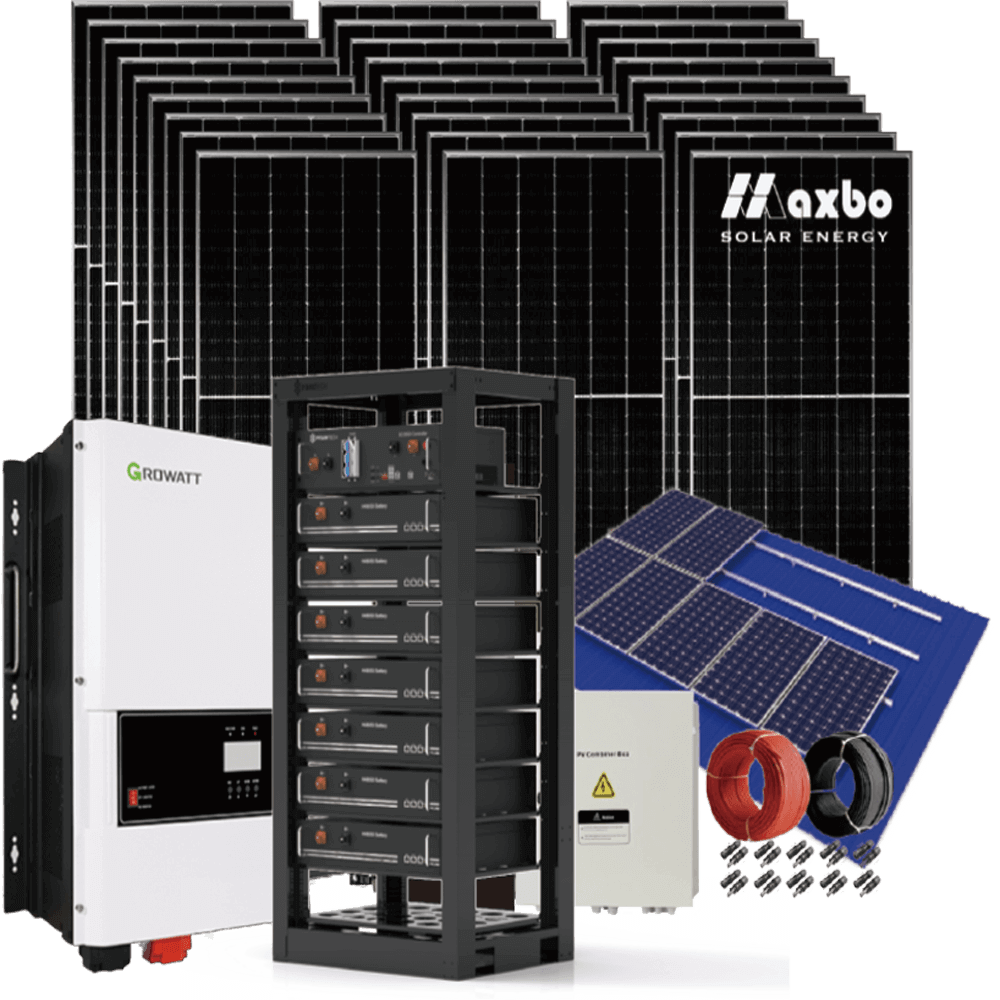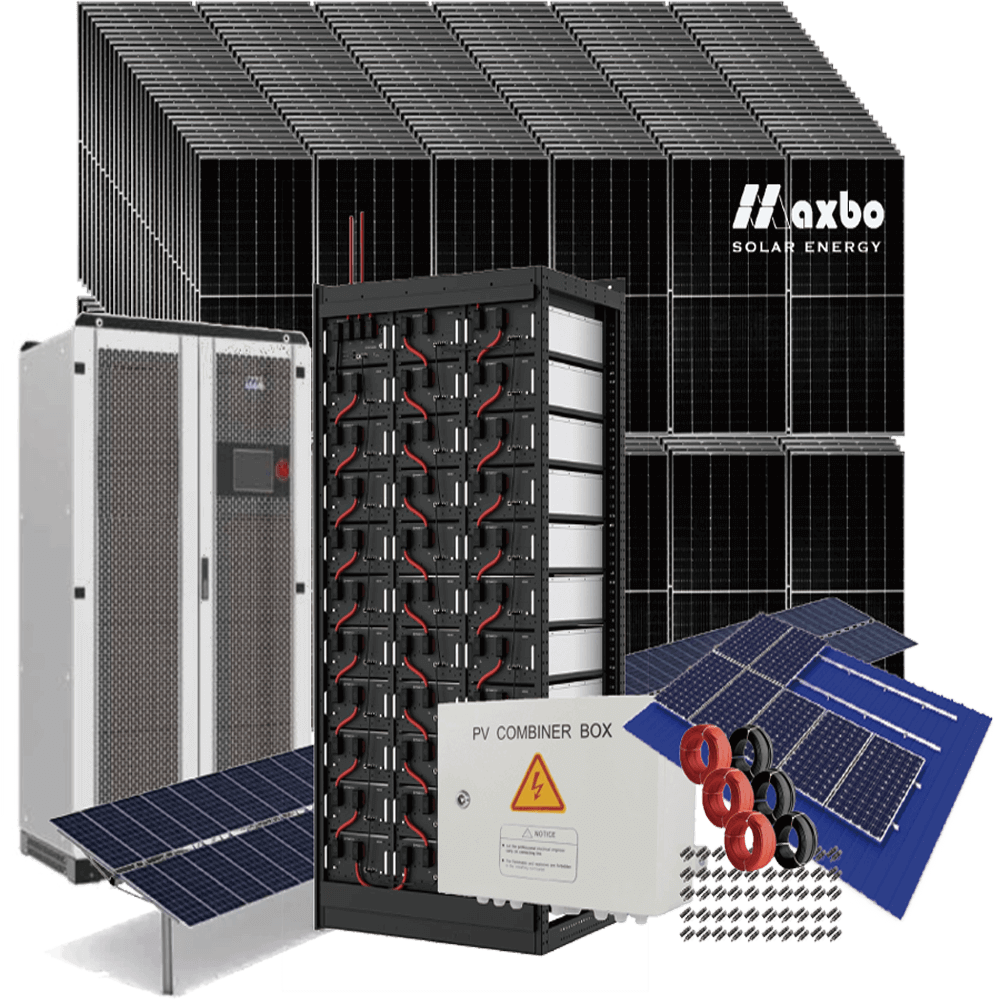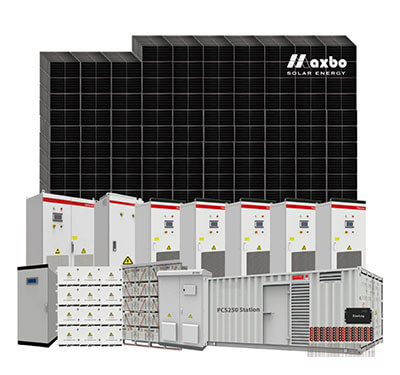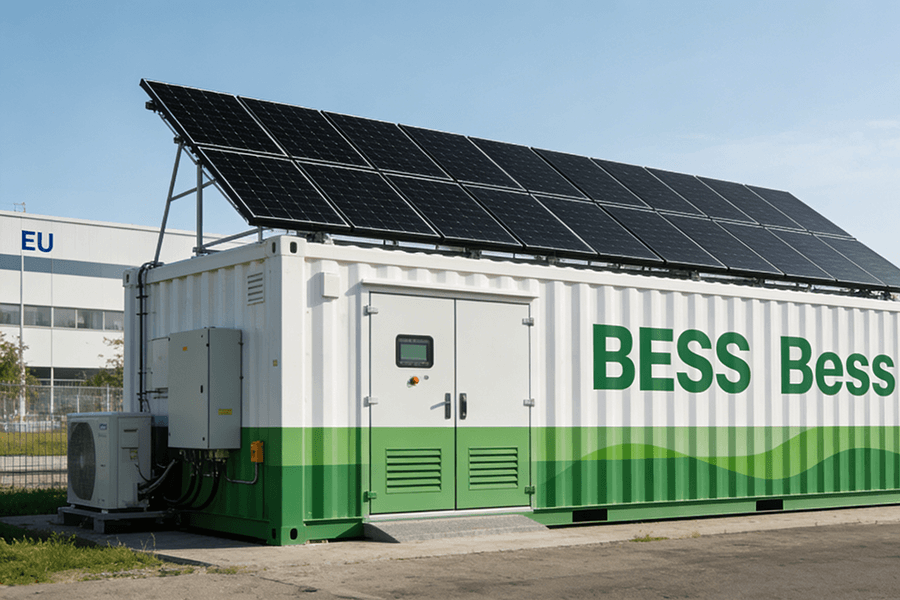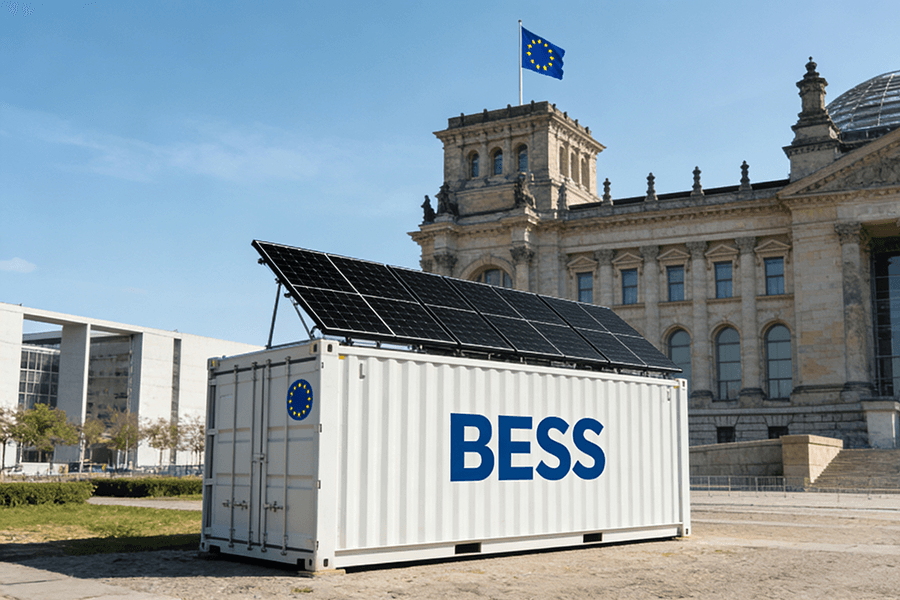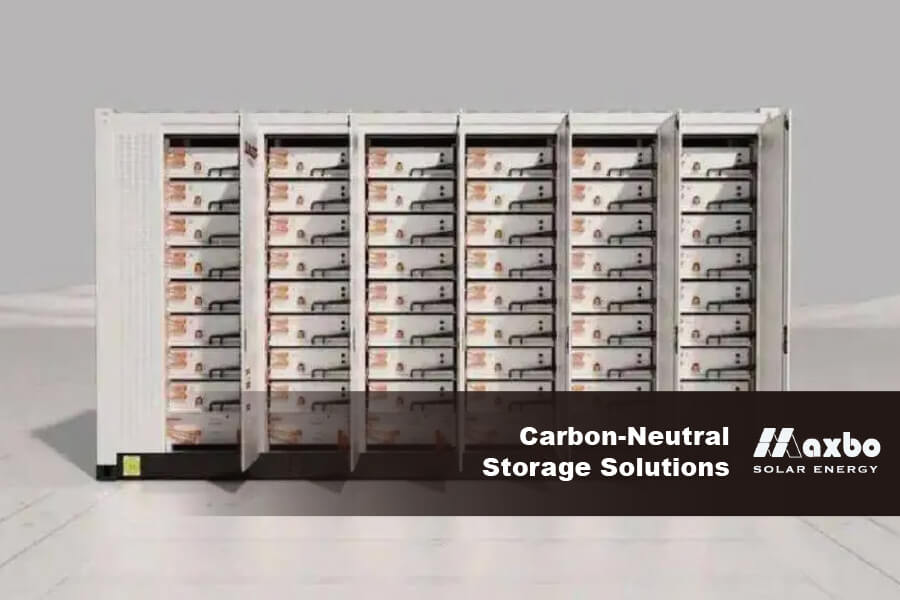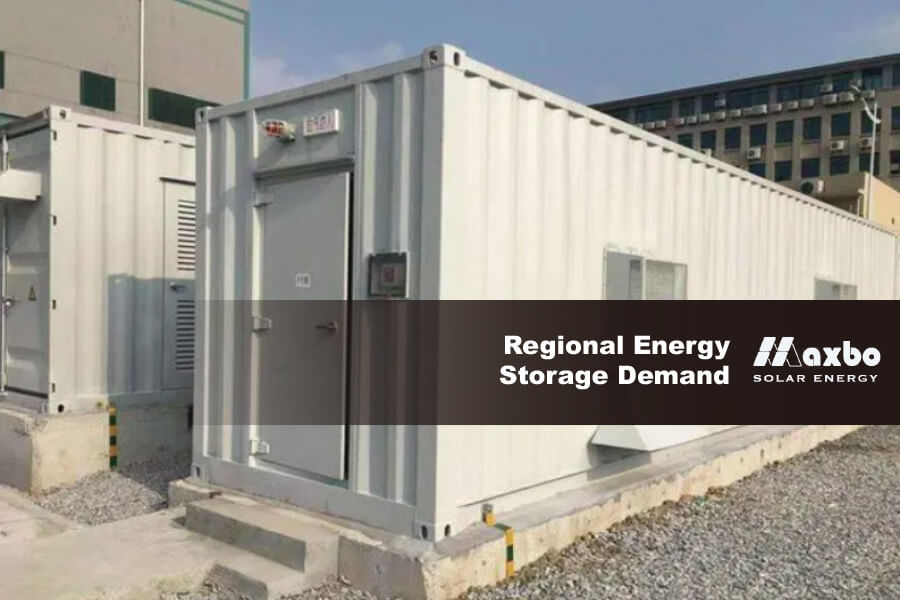Designing a solar PV power plant is a complex but rewarding process that requires careful planning, technical expertise, and attention to detail. As solar energy becomes an increasingly essential part of the global energy landscape, understanding how to design a solar PV power plant is crucial for anyone looking to harness this renewable resource effectively. At Maxbo, we offer all-in-one solutions for European clients, providing top-tier solar power designs that are tailored to local energy needs and regulations.
In this comprehensive guide on how to design a solar PV power plant, we will walk you through the essential steps to ensure your solar power plant is designed to maximize energy efficiency and minimize costs. From site selection to system sizing, this guide covers every aspect of the process, helping you achieve a sustainable and reliable energy solution.
Table of Contents
ToggleWhy Design Matters in Solar PV Power Plants
Designing a solar PV power plant correctly is essential for ensuring optimal energy production, system longevity, and financial viability. A well-designed solar power plant will generate maximum energy output while minimizing environmental impact and operational costs. The process of how to design a solar PV power plant involves multiple considerations, including geography, solar irradiance, topography, energy needs, and more(PVcase).
1. Initial Site Assessment and Feasibility Study
The first step in how to design a solar PV power plant is conducting a thorough site assessment. This involves evaluating the solar potential of the site, analyzing geographical data, and ensuring that the location is suitable for a large-scale solar installation. Factors such as solar irradiance, shading, and terrain must be considered.
Key Factors in Site Selection:
- Solar Irradiance: This refers to the amount of sunlight available at the site, which directly impacts the energy output of the plant(PVcase).
- Shading and Obstructions: Any obstacles such as trees or buildings that could block sunlight should be avoided(RatedPower — Smart flow for energy).
- Topography: Flat or slightly sloped land is ideal, as it reduces installation costs and maximizes solar exposure(ESR).
2. Regulatory Approvals and Permitting
Understanding local regulations and securing the necessary permits is another critical aspect of how to design a solar PV power plant. European countries, in particular, have specific rules regarding environmental impact assessments, grid connections, and land use(PFNexus).
Important Permits Include:
- Environmental Impact Assessments (EIA): A mandatory process in many regions to assess how the solar plant will affect local ecosystems(PFNexus).
- Grid Connection Permits: Ensuring the solar plant can be connected to the local utility grid(PFNexus).
3. System Sizing and Component Selection
Sizing the system correctly is fundamental in how to design a solar PV power plant. This involves determining how much energy the plant needs to generate to meet specific demands and selecting the appropriate components such as solar panels, inverters, and batteries.
Key Considerations for System Sizing:
- Energy Consumption: Calculate how much electricity the plant needs to produce to meet the site’s energy demands(PVcase)(Leonics).
- Component Selection: Choose high-efficiency solar panels and reliable inverters that convert DC energy into AC energy used by the grid(RatedPower Smart flow for energy).
At Maxbo, we recommend high-efficiency solar panels for European climates, where the number of sunny days can vary. Our systems are designed for optimal performance, even in less-than-ideal conditions.
4. Solar PV Power Plant Layout
A key part of how to design a solar PV power plant is determining the optimal layout of the plant to ensure maximum exposure to sunlight. This involves careful planning of the panel positioning, row spacing, and overall design of the installation.
Layout Design Considerations:
- Panel Orientation: In Europe, solar panels should typically be oriented south to capture the most sunlight(PVcase).
- Tilt Angle: The tilt of the panels should range between 15 and 40 degrees depending on the latitude of the site(Leonics).
- Row Spacing: Ensure there is enough space between rows to prevent shading and maximize efficiency(RatedPower — Smart flow for energy).
5. Electrical Design and Grid Connection
Designing the electrical infrastructure is another crucial step in how to design a solar PV power plant. This includes planning the wiring systems, ensuring the correct voltage levels, and integrating the plant into the local grid.
Key Steps in Electrical Design:
- Wiring Systems: Use high-quality cables to ensure safe and efficient energy transmission(RatedPower — Smart flow for energy).
- Inverter Selection: Choose the right inverter for your system to convert DC electricity into AC(RatedPower — Smart flow for energy)(PVcase).
- Grid Connection: Secure an agreement with the local utility company to ensure the solar plant can feed energy into the grid(PFNexus).
6. Financial Planning and Investment
Understanding the financial aspects is crucial in how to design a solar PV power plant. From upfront capital costs to long-term operational expenses, the financial health of your project depends on careful planning. Securing government incentives and loans can significantly reduce costs(PFNexus).
Financial Considerations:
- Initial Investment: Solar PV power plants require substantial initial capital, but government incentives such as tax breaks or grants can reduce these costs.
- Power Purchase Agreements (PPA): Long-term contracts with utility companies or private buyers can provide consistent revenue for the plant(PFNexus).
7. Installation and Commissioning
The final step in how to design a solar PV power plant is the installation and commissioning process. This involves the physical construction of the plant, including mounting the solar panels, installing the electrical infrastructure, and connecting the system to the grid(PFNexus).
At Maxbo, we ensure that the installation process is smooth, efficient, and compliant with all local regulations. Our experienced team manages every aspect of the installation to deliver a fully operational solar PV power plant on time.
8. Monitoring and Maintenance
Once the solar PV power plant is operational, regular monitoring and maintenance are required to ensure the plant runs efficiently. At Maxbo, we provide advanced monitoring systems that allow clients to track energy production in real time. how to design a solar PV power plant
Maintenance Activities Include:
- Cleaning Panels: Dust and debris can reduce energy efficiency, so regular cleaning is essential.
- Checking Inverters and Cables: Ensuring all components are functioning correctly to avoid energy loss(PVcase)(RatedPower — Smart flow for energy).
Maxbo’s Expertise in Solar PV Power Plant Design
At Maxbo, we specialize in providing end-to-end solutions for how to design a solar PV power plant. Our experience in the European market, combined with our high-quality components and expert installation services, ensures that every project we undertake is a success.
Why Choose Maxbo?
- Local Expertise: We understand the unique regulatory and environmental conditions of the European market.
- Comprehensive Solutions: From site assessment to installation and maintenance, we offer a full range of services.
- Premium Components: Maxbo uses only the highest-quality solar panels, inverters, and wiring to ensure long-lasting efficiency.
Conclusion: Design Your Solar Future with Maxbo
Designing a solar PV power plant is a complex, multi-step process that requires careful planning and expert knowledge. This guide on how to design a solar PV power plant provides the necessary insights to get started, but partnering with the right experts is crucial for success.
At Maxbo, we offer comprehensive services tailored to European clients, ensuring that your solar PV power plant is efficient, compliant, and profitable. Explore our products and services at Maxbo-Solar and let us help you design a solar power solution that meets your energy needs.
References:
- EnergyScape Renewables: www.energyscaperenewables.com
- RatedPower: www.ratedpower.com
- PVcase: www.pvcase.com
- PF Nexus: www.pfnexus.com
- Leonics: www.leonics.com
Related Solutions
Related Blogs
EU Green Building BESS container: Mandatory for 2030 New Constructions
行政2025-12-08T17:00:00+08:00December 8th, 2025|Categories: Design, News|
EU Historic Building BESS Container: Save Heritage, Slash Carbon—No Drills Required
行政2025-12-08T16:59:09+08:00December 8th, 2025|Categories: Design, News|
Let’s Make Things Happen
Add notice about your Privacy Policy here.
Let’s Make Things Happen
”The Maxbo team of sales consultants will continue to enrich our own expertise and experience to empower the development of sustainable energy with rigor.“
Maxbo CEO
You will need to provide: 1. the amount of electricity used. 2. the type and power of the load. 3. the electricity consumption habits (daytime/nighttime consumption). 4. the need to store electricity. 5. the need to feed electricity to the mains. 6. drawings or address of the installation site. 7. other special requirements
We can provide you with a quotation, a specification for all products, a circuit connection diagram and a diagram of the installation and placement of the PV panels. Any other requirements and adjustments needed can be discussed with our team.
We can meet the needs of most scenarios, whether your application is for domestic, commercial and industrial use, in remote areas, or for grid-level energy storage, we have experienced colleagues to design and deliver the right solution.
Add notice about your Privacy Policy here.
How much solar power do I need?
Most homes need 5–12kW, depending on your energy use and location.
Off-grid vs. grid-tied — what’s the difference?
Off-grid works without the utility grid; grid-tied lets you sell extra power back.
Do I need permits?
Usually yes — check local rules or ask us for guidance.
How long does a battery last?
Depends on size and load. A 5kWh battery can power a fridge for about 40 hours.
Can I upgrade my system later?
Yes, our systems are modular and easy to expand.
Does Maxbo offer installation?
We ship globally and connect customers with trusted local installers.
